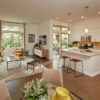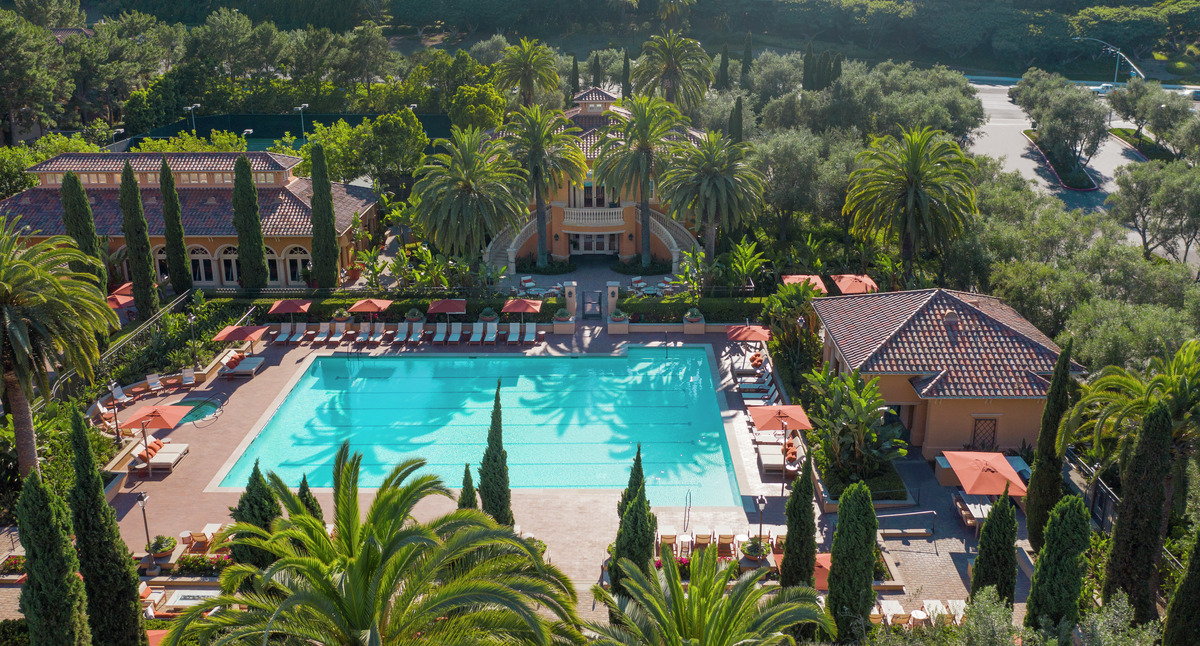
When it comes to landscaping, many of us are guilty of digging holes, dropping in some plants, and hoping for the best. However, there is a lot more to consider when designing and ultimately planting your outdoor space, such as local climate, sun and shade locations, maintenance schedule, and more.
We sat down with Mark Garrity, Senior Director of Landscape Architecture at Irvine Company Apartment Communities, to discuss one of his many projects, Santa Clara Square in Santa Clara.
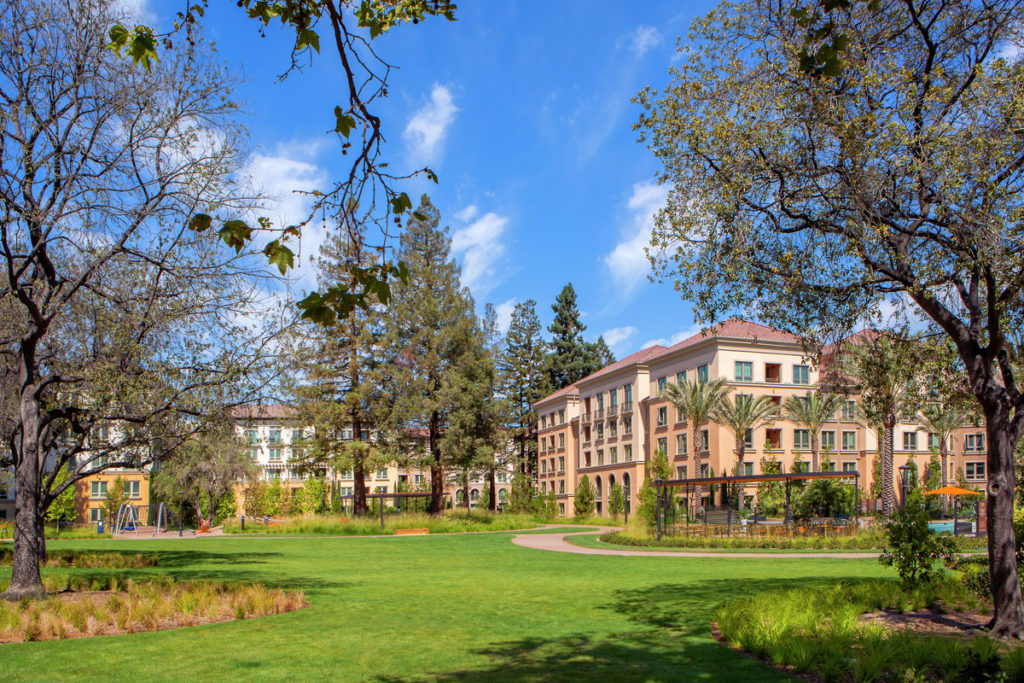 Irvine Company Apartment Communities: When approaching the overall landscape architecture for a new apartment community, what considerations are first and foremost?
Irvine Company Apartment Communities: When approaching the overall landscape architecture for a new apartment community, what considerations are first and foremost?
Mark Garrity: We consider many things when beginning the development of a new community since each site and development is unique. At Santa Clara Square, one of the more unique aspects was a large number of existing mature specimen trees. The trees were either preserved in place as the site plan was developed, as in on the perimeter of the site with the double row of mature Ash trees, or in this case, of the stately giant Redwoods that dotted the site. In addition to saving trees in place, multiple others were saved and transplanted strategically around the buildings. The process of saving or transplanting mature trees gives a new community the feeling of one that has been there for decades.
ICAC: How does the overall exterior architecture of the building inform the landscape architecture?
MG: We pride ourselves in assuring that architecture and landscape work harmoniously to create a vibrant, residential enclave. Trees and foundational planting work closely with the architectural facade to create a composition that is aesthetically pleasing. The intent of the landscape is for it to mature in harmony with the building over time.
ICAC: Across all your projects in Orange County, San Diego, Los Angeles, and Northern California, which plants are most used and why?
MG: We have a fairly standard palette of plant material that tends to be evergreen in nature and easily maintained. Water conservation is also a strong consideration as well as design principles of combining color, texture, and interest to create a beautiful composition of trees, shrubs, and vines.
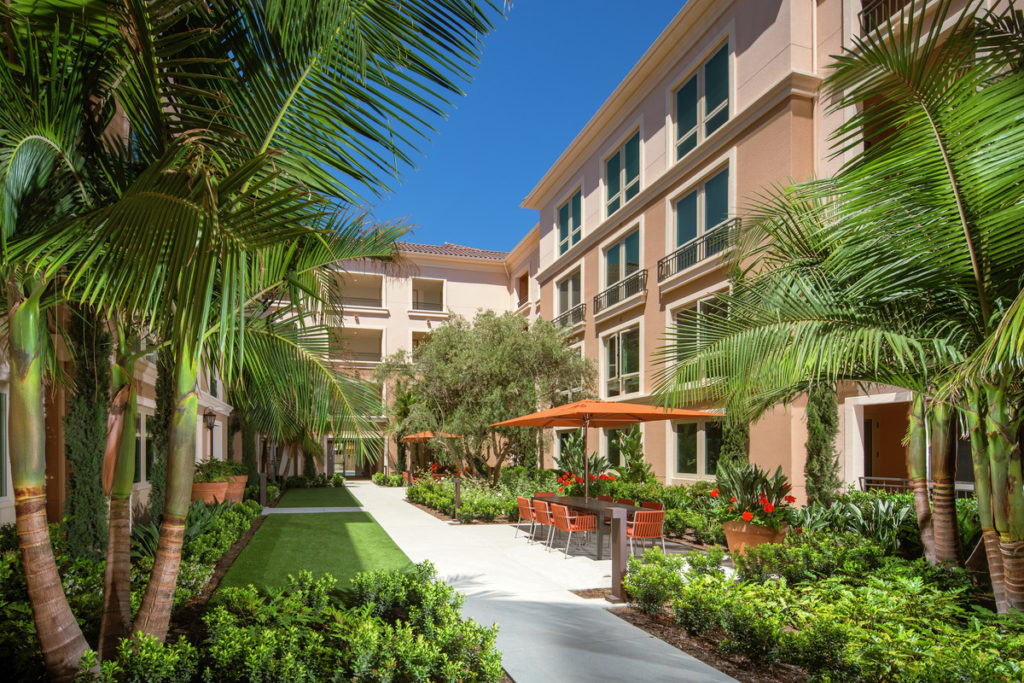 Promenade at Irvine Spectrum, Irvine, CA
Promenade at Irvine Spectrum, Irvine, CA
ICAC: Which is your favorite plant to work with and why?
MG: It’s hard to pick a favorite, however when it comes to palms the date palms (Phoenix Dactylifera) are hard to beat for their stately nature and large, beautiful fronds. Redwood trees are also a favorite. And for shrubbery, the Bird of Paradise is great for its long-lasting beautiful orange blooms.
ICAC: How have the outdoor spaces evolved to speak to our changing lifestyles?
MG: Definitely, one of the greatest things about our communities is the indoor/outdoor relationship created by design. Especially here in Coastal California, people expect to have a multitude of outdoor spaces to enhance their daily lives.
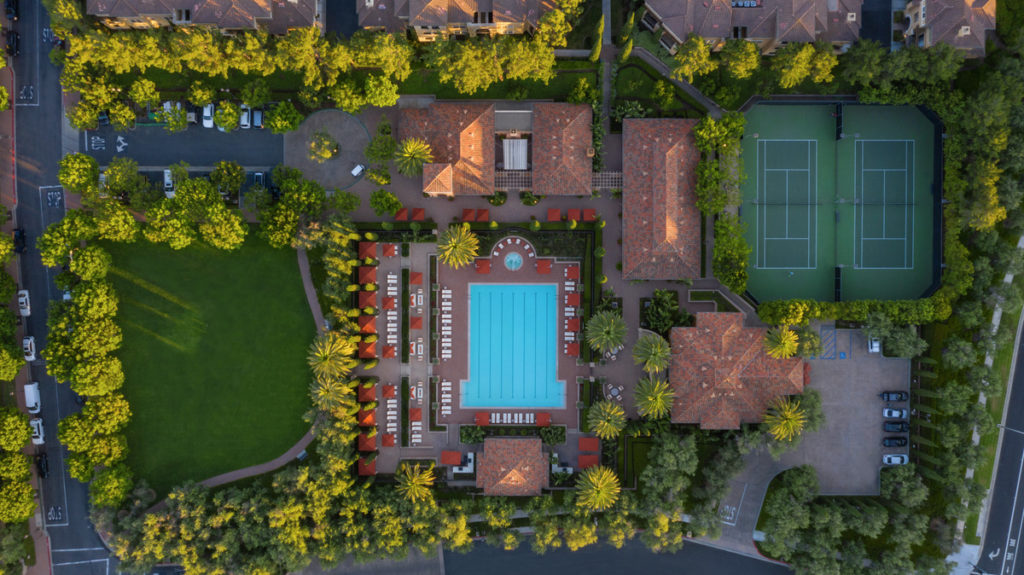
Newport Bluffs, Newport Beach, CA
ICAC: Can you share some stats on the latest project?
MG:
- 75 Specimen Olives trees
- 20 – 25’ palm trees
- Saved nearly 100 mature trees in place
- Transplanted 25 Specimen Redwood trees. The largest in a 20’ box, weighing 80,000 lbs!
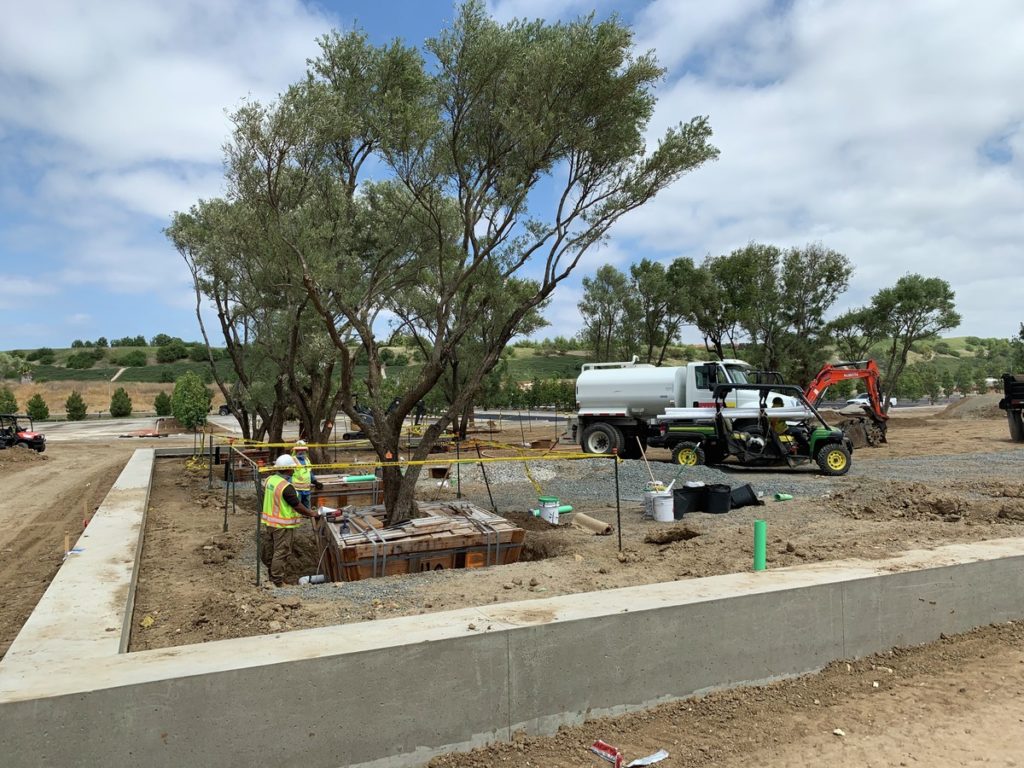 ICAC: With drought threats always looming over California, how do you integrate sustainability and water conservation into your landscape designs?
ICAC: With drought threats always looming over California, how do you integrate sustainability and water conservation into your landscape designs?
MG: Water conservation is addressed in multiple ways:
- Using drought-tolerant less water-thirsty plant species.
- Efficient state-of-the-art irrigation systems, and smart controllers.
- Runoff water is caught, stored, and allowed to percolate into the soil, replenishing the groundwater table.
ICAC: What are your recommendations for a low-cost, low-maintenance garden?
MG: Keep things simple by design.
ICAC: For residents, do you have any fun ideas for balcony planters or potted plants to keep balconies looking vibrant and green?
MG: I love seeing what our residents do with potted plants on balconies, stoops, and patios! I prefer succulents as they are hardy, use less water, and don’t require much maintenance.
ICAC: In your eight years at Irvine Company, what has been your favorite community design and why?
MG: My favorite is usually the last development and Santa Clara Square is one of my favorites, as a vibrant mixed-use mini-masterplan built from the ground up. There, too, we saved and transplanted many mature trees to make the community look as if it’s been there for decades.
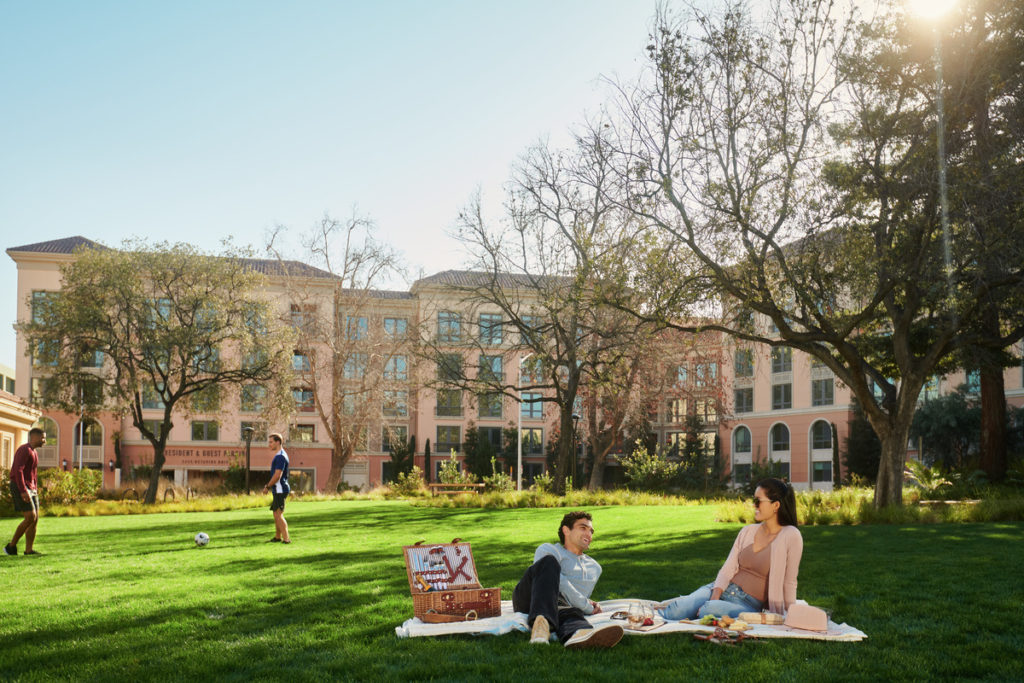 Santa Clara Square, Santa Clara, CA
Santa Clara Square, Santa Clara, CA
About Mark Garrity:
- Graduate in Landscape Architecture, California Polytechnic University, Pomona 1985
- Licensed Landscape Architect # 2926 – 35 years
- Senior Landscape Architect – The Irvine Company 8 years

